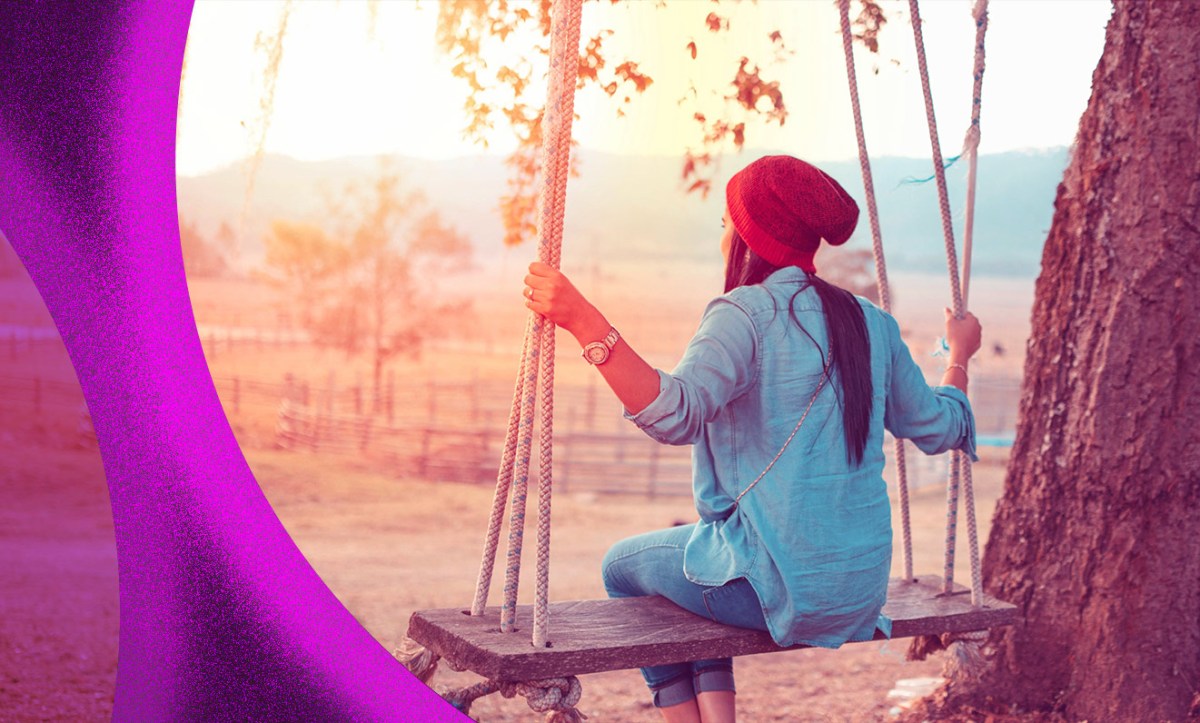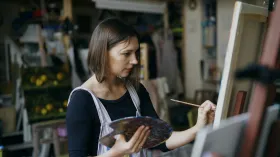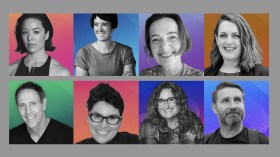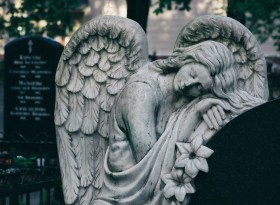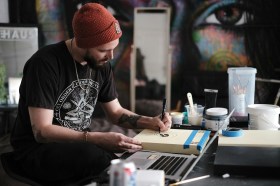In this FREE journey to creative recovery, we’re following Julia Cameron’s bestselling creativity self-help manual, The Artist’s Way, tracing the book’s 12-week program with a series of inspiring ArtsHub articles, resources and ideas for artist-date activities. There’s also a Facebook community group you can join for discussion and support.
To recap, the idea with The Artist’s Way is to commit yourself to a structured creative recovery that will spark joy, remove blocks and build the confidence to play and take risks – whether you’re a professional artist or not. The main tools of the course are Morning Pages and Artist Dates. You can read previous articles here:
- Introduction: an invitation to change your life
- Week 1: Recovering a sense of safety
- Week 2: Recovering a sense of identity
- Week 3: Recovering a sense of power
- Week 4: Recovering a sense of integrity
- Week 5: Recovering a sense of possibility
- Week 6: Recovering a sense of abundance
- Week 7: Recovering a sense of connection
- Week 8: Recovering a sense of strength
- Week 9: Recovering a sense of compassion
- Week 10: Recovering a sense of self-protection
Or you can jump right in and follow along, wherever you are in the process. Grab a copy of the book, start reading and look out for ArtsHub’s weekly articles, published each Monday.
Keep up to date with The Artist’s Way series here
Week 11: Autonomy, freedom and accepting ourselves as Artists
This week’s chapter is all about consolidation. If you’re still on the path, you’ve come a long way these past 10 weeks and you’ll be familiar with your regular blocks, excuses and challenges. Hopefully, you’ll also be developing some creative ways to combat these. Rest assured, if you’ve been doing Morning Pages and Artist Dates – however sporadically – some movement and growth has been happening.
Are you calling yourself an Artist yet? It takes some people a very long time to be able to identify that way, especially if they don’t get paid or recognised by the world for their creative pursuits. Even professional artists can have difficulty with owning the identity. One of the gifts of The Artist’s Way program is the permission it gives us to call ourselves artists and treat that part of our lives with reverence, dedication and a significant investment of time.
A different mix of stability and flow
Cameron writes, ‘As an artist, I may need a different mix of stability and flow from other people. I may find that a nine-to-five job steadies me and leaves me freer to create. Or I may find that a nine-to-five drains me of energy and leaves me unable to create. I must experiment with what works for me.’
In a culture that privileges full-time work and highly structured careers, it can feel lazy to say that you can’t thrive that way. It’s easier to use other people or illness as an excuse and I’ve personally found myself doing this: ‘I can’t work full-time because my nervous system gets overloaded.’ Or, ‘I can’t work full-time because my child and family need a lot from me.’
But it’s just as valid to say: ‘I don’t want to work full-time because I don’t want to. I need time to play, rest and create in order to be healthy and fulfilled.’
I can already hear my inner critic replying: ‘What an indulgence! You irresponsible entitled brat, when so many people have no choice at all, especially with the cost of living crisis.’
But here’s the thing: we all have more choice than we give ourselves credit for. As Cameron reminds us, we may need to accept that we’ll never have fancy houses or luxury holidays, or the kind of secure and well-superannuated lives our friends and family may want for us. But we do get to choose how we spend our time and, as artists, we need a certain amount of sacred “irresponsibility” to keep the fires burning.
‘To kill your dreams because they are irresponsible is to be irresponsible to yourself,’ she says. ‘Credibility lies with you and God – not with a vote of your friends and acquaintances.’
We can keep a roof over our heads while also keeping sight of another truth, says Cameron. ‘To be an artist is to risk admitting that what is money, property and prestige strikes you as just a little silly.’
Our credibility lies with us
The Artist’s Way is about finding the psychological independence and confidence to grow in ways that feel intuitively correct – regardless of external expectations and demands.
Success can be dangerous then, when it asks an artist to keep repeating themselves in order to meet the market’s demand. ‘Paint more nudes! ‘Use decor-friendly light colours!’ ‘Make the sequel!’ ‘Write Romantasy novels instead of poetry.’ (For more on this, as well as an interesting piece of political art in and of itself, see Kate Just’s Instagram post embedded near the end of this article.)
Cameron reminds us that creativity is, above all, a spiritual practice, not something that can be harnessed, perfected and infinitely repeated. The artistic life often involves a restless, circular and unfinished quality – just when we’ve “arrived” at a pinnacle of success or creation, we need to start again on something new, and it can feel like going back to the very beginning.
Exercise and the Zen of the artist
This week’s chapter talks about the importance of physical movement for feeding the creative soul. The very habit of doing something just for its own sake, like walking or swimming, is akin to Morning Pages. We do them to get to the other side. We do them even when we don’t quite feel like it and they feel “pointless”. And in the process, something shifts. We get stronger and fitter.
Communion with nature, refreshing our image-banks, and building a stronger, oxygenated body are all benefits of exercise and physical movement. Exercise gets us moving in multiple physical and psychological ways, ‘from stagnation to inspiration, from problem to solution, from self-pity to self-respect’.
Building your artist’s altar
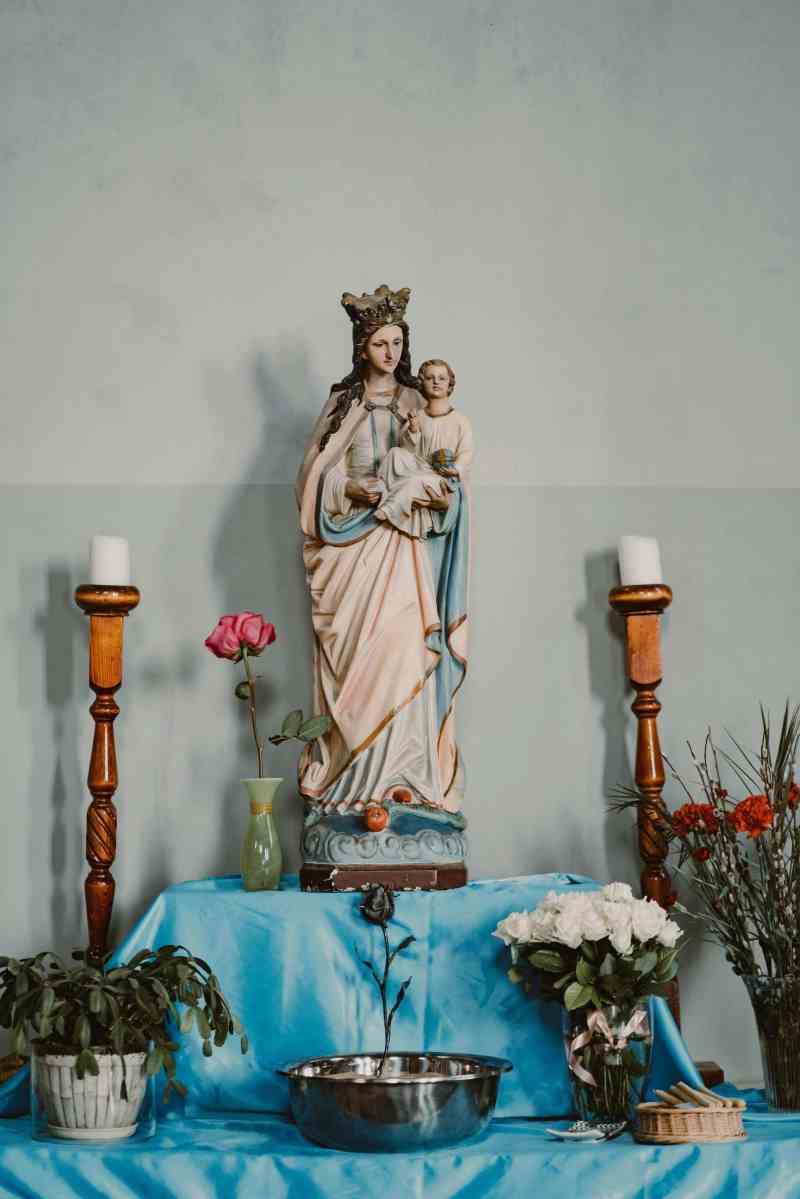
Cameron says that creating an altar where you centre yourself spiritually can be incredibly healing, comforting and inspiring for artists, whatever their religious beliefs.
An altar could be a shelf, a ledge, a tiny space on a desk, or even a circle in the dirt under a tree. The point is, it’s a special place and you make it your own through regular ritual.
‘Many of us grew up in punitively religious homes,’ Cameron says. ‘For us to stay happily and easily creative, we need to heal from this.’ We can do this by creating our own sustaining rituals. ‘We need to unlearn our old notion that spirituality and sensuality don’t mix.’
This resonates with me. Churches and hymns send a shiver down my spine, and I can’t bear to look at religious art. But a candle, a flower, a feather I find on my walk… all these things can be arranged above my desk in a way that feels beautiful and helps me overcome the fear of the blank page.
I’ve written before about these rituals, this “rain dance”, and in recent weeks I’ve been experimenting more with giving my problems and anxieties up to some kind of Higher Power that certainly isn’t a Christian God, but it could be for you, if that feels right.
My journey with The Artist’s Way this week
With the draft of my novel sent to the publisher, it’s go, go, go – choosing the book cover, asking other authors for “blurbs” and planning the launches in Brisbane and Adelaide. This all feels rather terrifying and overwhelming, especially reaching out to strangers for favours. On Wednesday I had a very dark day, full of shame and fear. The urge to hide, avoid, eat junk and create relationship dramas was very real and I almost laughed in recognition at these common tactics employed by my scared artist child.
Instead, I reached out for help. The discomfort I was feeling around my cover design “needing something more” forced me to phone up a graphic designer friend, who made useful suggestions that led to an “aha” moment. Then I was brave and sent a few difficult emails. I’ll need to do more this week.
I’m also doing some soul-searching around my own inner shame, and finding my way through to a place of being ready to “share not sell” my art. The work I did in Week Nine on compassion and creative U-turns is certainly helpful right now.
My Artist Date
This week I found myself playing with some beautiful and mysterious images from an old wall calendar featuring 12 works by romantic surrealist artist Daniel Merriam.
Many of these pictures depict impossible houses that defy gravity or logic. There are fairytale elements, winged creatures, mad hatters, buildings atop elephants’ backs, melting clocks and faces that appear like odd gods in the scenery.
I let myself disappear inside each picture, enjoying the secrets hidden in the details, the way the scenes inspired imaginative play. Then I decided I wanted one in a frame.
I dismembered the calendar and flipped through the pictures, sifting to find the one that I liked best and cutting it to fit the frame above my desk with a pair of yellow scissors. This took me back to primary school – that simple act of trying to cut on a straight line – so foreign to my everyday life.
The picture I chose is below – High Altitude by Daniel Merriam. It opens up my blank wall and makes me feel a sense of height and expansion. A fresh image to inspire. This isn’t a house you could live in, but it’s one you could dream in.
Morning Pages – some inspiration to keep going
This week in our Facebook Community Group, a member shared a new Guardian article – ‘My own inner critic is a bully’: Julia Cameron on creative demons and updating The Artist’s Way by Genevieve Fox. It’s well worth a read in full, but this passage on Morning Pages is particularly helpful:
‘With MPs, you’re not flexing for the next Anna Karenina, you’re getting rid of all the stuff clogging your mind, what actor and MPs fan Michaela Coel calls the “gunk”. It could be: “I forgot to buy kitty litter,” says Cameron, 76, on one of her many promotional videos, or a plan for revenge – also OK because: “You are becoming acquainted with all the dark corners of your psyche.” MPs are a “clearing exercise,” says Cameron. In Jungian terms: “You are meeting your shadow and taking it out for a cup of coffee.” When you get back to your day, or your desk, the gremlins of self-sabotage, distraction, fear and all the many negative thoughts that thwart creativity have been acknowledged and set aside.’
Some Artist Date ideas and inspirations
Have a look at this article: 75 Artist Date Ideas by Stephanie Scott. It includes great easy suggestions like purging your closet, rearranging your bookshelves, creating a vision board and star-gazing, along with more challenging dates, like visiting your childhood home, going to the opera or catching a plane somewhere new.
Finally, here’s that food for thought from Melbourne textile artist Kate Just, who is well worth a follow on Instagram.
Other Resources
- Check out ArtsHub Events listings with options in all states – activities including art exhibitions, theatre, dance, writing festivals.
- Visit ArtsHub‘s The Artist’s Way Community Facebook group to share your journey, connect with others and ask questions. We’d love to hear from you.


